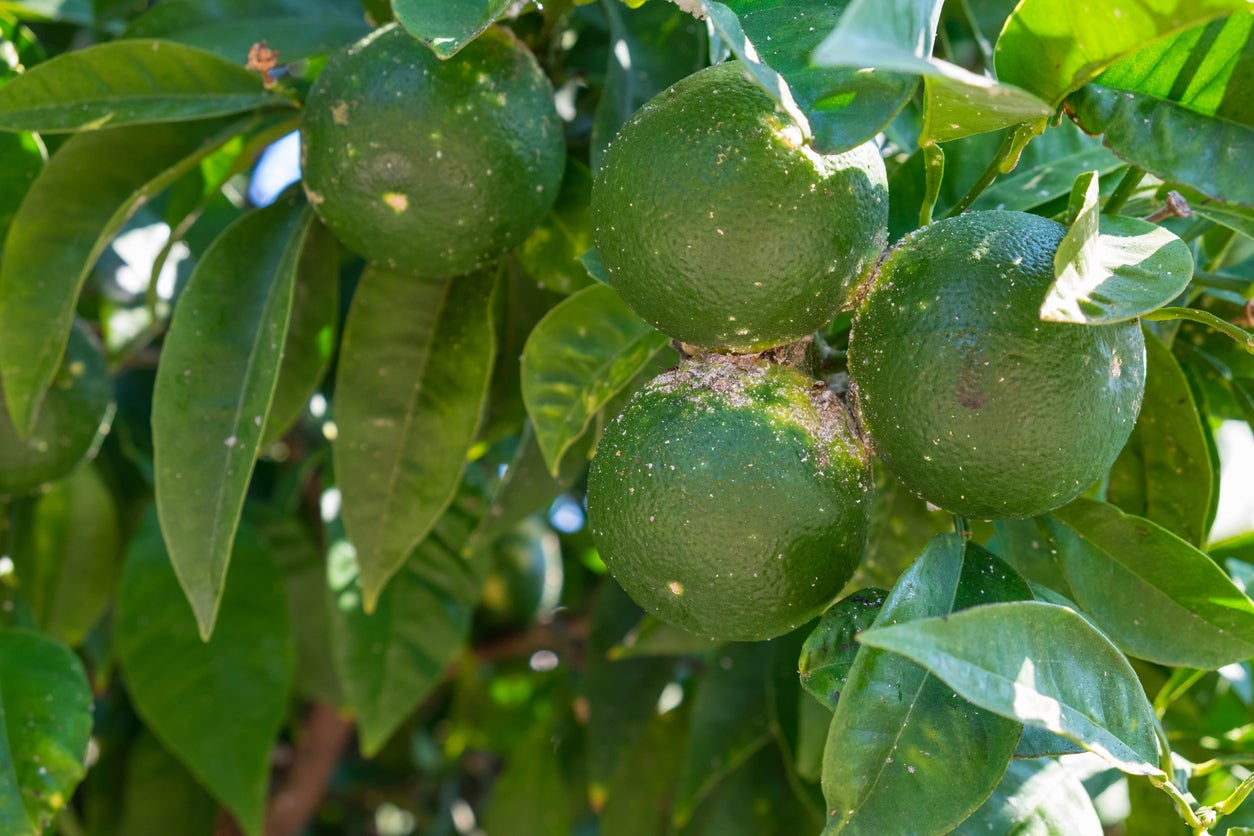Citrus Scab Control: Tips On Treating Citrus Scab Disease


If you grow citrus fruits on a few trees in the home landscape, you may be familiar with citrus scab symptoms. If not, you may ask, what is citrus scab? It is a fungal disease that results in brownish, warty scabs that appear on the rind and, while it does not make the fruit inedible, it does reduce marketability in most cases.
Citrus Scab Symptoms
Raised, spongy pustules start out a pinkish color and become grayish, then brown. Citrus scab affects virtually all citrus types and also appears on leaves, stems, and twigs. According to citrus scab info, warts are more raised on some fruits and flattened on others. Fruits are only vulnerable during the first few weeks of their development. A similar disease, called sweet orange scab, may affect fruits in combination with citrus scab.
If you grow citrus for your family or to sell it in the market, you’ll want to apply citrus scab control to get rid of the ugly warts before development. It is a result of the fungal pathogen Elsinoe fawcetti. Spores of the pathogen are spread by splashing water and wind-driven rain. Even if this has not yet appeared in your orchard, it is prudent to be familiar with symptoms and control.
Treating Citrus Scab Disease
Check the underside of leaves and small twigs for raised pustules that may appear before bloom of your fruit trees. The pathogen becomes active in just a short time following wet conditions and temperatures between 68 and 73 degrees F. (20-23 C.). Sources say it can develop in just one to four hours. About eleven varieties of citrus tree act as hosts for this fungal disease.
Treating citrus scab disease is best accomplished with the use of fungicides and well-timed sprays. The first treatment should be applied before bloom. Some proven to be effective treatments include a spray when blooms are partially open, about 25% of blooms. Don’t use a copper-based fungicide for the first spray, but these are most effective for those following the first initial treatment. Spray again at petal-fall and then two to three weeks later.
Learning how to get rid of citrus scab is necessary for fruits you may market and especially those you feed your family.
Sign up for the Gardening Know How newsletter today and receive a free copy of our e-book "How to Grow Delicious Tomatoes".

Becca Badgett was a regular contributor to Gardening Know How for ten years. Co-author of the book How to Grow an EMERGENCY Garden, Becca specializes in succulent and cactus gardening.